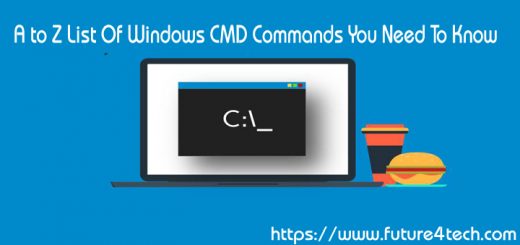XCACLS.exe – Windows CMD Command
Display or modify Access Control Lists (ACLs) for files and folders. For Vista and greater use icacls.
Syntax
XCACLS filename [options]
XCACLS filename
Key
If no options are specified XCACLS will display the ACLs for the file(s)
options can be any combination of:
/T Traverse all subfolders and change all matching files found.
/E Edit ACL instead of replacing it.
/x Edit ACL instead of replacing it; affect only ACEs that this user already owns
/R user Revoke all access rights from the given user.
/D user Deny specified user access, this will over-ride
all other permissions the user has.
/C Continue on access denied errors.
/Y Replace user's rights without verify
/P user:permision[;FolderSpec]
Replace user's rights. see /G option below
/G user:permision[;FolderSpec]
Grant specified user access rights, permision can be:
r Read
c Change (write)
f Full control
p Change Permissions (Special access)
o Take Ownership (Special access)
x EXecute (Special access)
e REad (Special access)
w Write (Special access)
d Delete (Special access)
t Used only by FolderSpec. see below
FolderSpec is a permission applied to a folder. If FolderSpec is not specified then permission will apply to both files and folders.
This allows you to set different permissions that will apply (through inheritance) when new files are added to the folder.
FolderSpec = ;T@ where @ is one of the rights above, when this is specified new files will inherit FolderSpec instead of permission. At least one folder access right must follow the T For example ;TF will apply full control (but ;FT is not valid)
Wildcards can be used to specify more that one file in a command. You can specify more than one user in a command. You can combine access rights.
Although taking ownership is listed as an option it does not work, use SUBINACL for this.
Inheritance Errors
“Permissions incorrectly ordered” – the quickest way to resolve or avoid these errors is to use the newer iCACLS command instead of XCACLS.
Inherited folder permissions are displayed as:
OI - Object inherit - This folder and files. (no inheritance to subfolders)
CI - Container inherit - This folder and subfolders.
IO - Inherit only - The ACE does not apply to the current file/directory
These can be combined as follows:
(OI)(CI) This folder, subfolders, and files.
(OI)(CI)(IO) Subfolders and files only.
(CI)(IO) Subfolders only.
(OI) (IO) Files only.
So BUILTIN\Administrators:(OI)(CI)F means that both files and Subdirectories will inherit ‘F’ (Fullcontrol)
similarly (CI)R means Directories will inherit ‘R’ (Read folders only = List permission)
When xcacls is applied to the current folder only there is no inheritance and so no output.
NTFS standards have changed with different versions of Windows and XCACLS has been updated to suit.
Examples:
Allow guests the right to read and execute in MyFolderXCACLS MyFolder /E /G guests:rx
Allow guests the Full Control permission in MyFolder and all subfoldersXCACLS MyFolder /T /E /G guests:f
Grant guests only read access to all files in and below MyFolder,
new folders created will be Read Access only, new files will not inherit any rights.XCACLS MyFolder /T /P guests:R;Tr
Grant guests only execute access to all files in and below MyFolderXCACLS MyFolder /T /P guests:x


Your style is really unique in comparison to other
folks I’ve read stuff from. Thanks for posting when you have the opportunity, Guess I’ll just bookmark this blog.